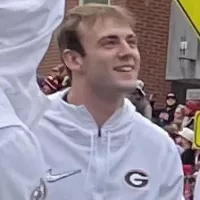Sonoma Raceway, a road course and dragstrip in Sonoma County, California, is known for its challenging 12-turn, hilly course. It hosts a variety of motorsports events, including NASCAR Cup Series, IndyCar Series, NHRA Mission Foods Drag Racing Series, and motorcycle races. The track is also popular for amateur racing events, particularly among Sports Car Club of America members. Located in the Sonoma Mountains, it offers scenic views and is easily accessible from San Francisco and Oakland.
1970: "Little Fauss and Big Halsy" Film Release
"Little Fauss and Big Halsy," a motorcycle road racing film starring Michael J. Pollard and Robert Redford, premiered. The film's plot centers around Redford's character, Halsy, and his aspiration to conquer Sears Point Raceway, a testament to the track's prestige in the racing world.
1989: Pit Road Constraints at Sonoma Raceway
From 1989 until 2001, Sonoma Raceway's pit road could only accommodate 34 pit stalls, leading to teams sharing stalls or utilizing the garage area during the Toyota/Save Mart 350 Cup Series race.
1991: Sonoma Raceway Featured in "Bill Elliott's NASCAR Challenge"
Released in 1991, "Bill Elliott's NASCAR Challenge" featured Sonoma Raceway, showcasing the track in a NASCAR-themed video game.
1994: Introduction of "Gilligan's Island" Pit Lane
Prior to the 1994 NASCAR race, Sonoma Raceway introduced a makeshift auxiliary pit road inside Turn 11, dubbed "Gilligan's Island." The nine slowest qualifying cars were relegated to these stalls, putting them at a significant disadvantage.
1994: Sonoma Raceway Makes its Video Game Debut
Sonoma Raceway debuted in the world of racing video games with its inclusion in Papyrus's "NASCAR Racing" for PC, marking the start of its digital presence in racing simulations.
2000: All-Time Track Record Set by Allan McNish
Allan McNish, driving an Audi R8, established the fastest official all-time track record on Sonoma Raceway's original Long Grand Prix Road Course during the 2000 Grand Prix of Sonoma qualifying, clocking in at 1:20.683.
2001: End of Pit Road Constraints
This year marked the end of the pit lane constraints at Sonoma Raceway, which had been an issue since 1989. Teams no longer had to share pit stalls or use the garage area for pit stops.
2002: Removal of "Gilligan's Island"
Sonoma Raceway completed renovations in 2002, extending the main pit road up to the start-finish straight. This eliminated the need for "Gilligan's Island," which has not been used in any NASCAR race at the track since.
2003: Introduction of the Motorcycle Course Layout
A new layout for motorcycles, measuring 2.320 miles (3.734 km) and featuring 12 turns, was unveiled at Sonoma Raceway. This layout, based on the full course, bypasses the "Chute" and parts of the "Esses" for a distinct racing experience.
2004: Sonoma Raceway Expansion
In 2004, Sonoma Raceway underwent a significant expansion. The project included the addition of 64,000 hillside seats, 10,000 permanent grandstand seats, a new wastewater treatment facility, 100 acres of restored wetlands, permanent garages, additional retail space, a go-kart track, and a new drag strip. The expansion increased the venue's capacity to 102,000 during major events, up from the permanent seating capacity of 47,000.
2006: INDYCAR Adopts Modified Sonoma Layout
INDYCAR began using a modified version of the Sonoma Raceway layout. This layout, skipping sections of the "Esses" and utilizing a hairpin turn (Turn 11a) near the drag strip control tower, was used by INDYCAR until 2011.
2011: End of Modified Layout for INDYCAR
2011 marked the final year that INDYCAR utilized the modified layout at Sonoma Raceway, which they had been using since 2006.
2012: Introduction of the Grand Prix Layout
Sonoma Raceway introduced the "Grand Prix layout," an FIA Grade 2 variant, which was adopted by INDYCAR from 2012 to 2018. This layout features a Magny Cours-style hairpin, a widened Turn 9A, and a new Turn 11B designed for overtaking.
2018: End of Grand Prix Layout for INDYCAR
This year marked the final time INDYCAR raced on the Grand Prix layout at Sonoma Raceway, concluding its usage since its introduction in 2012.
June 12, 2023: Information Update
As of June 12, 2023, this document reflects the latest available information on Sonoma Raceway.
April 2024: Fastest Official Race Lap Records Update
As of April 2024, Sonoma Raceway maintains a list of the fastest official race lap records for various racing classes.
Mentioned in this timeline

Robert Redford was a highly acclaimed American actor director and...

Sears a renowned American department store chain was established in...

A video game is an electronic game involving user interaction...
Trending

24 days ago Joseph Quinn's 'Stranger Things' impact, 'Master of Puppets' fame, and 'Pillion' BIFA win.

Mike McCarthy is an American football coach He was the head coach of the Dallas Cowboys - and the Green...

8 months ago Becky Lynch Ventures into 'Star Trek' and 'Happy Gilmore 2,' Feuds Emerge
8 months ago Maldives bans Israelis in solidarity with Palestinians amid Gaza conflict escalation.

3 months ago Brock Bowers' Injury Concerns: Raiders' Crosby Also Added to Injury Report

2 months ago Edison Upgrades South Pasadena Electrical Grid Amidst Storm Recovery, Lifting Evacuation Orders
Popular

Tucker Carlson is an American conservative political commentator known for...

XXXTentacion born Jahseh Dwayne Ricardo Onfroy was a controversial yet...

Ben Shapiro is a prominent American conservative political commentator media...

Candace Owens is an American conservative political commentator and author...

William Franklin Graham III commonly known as Franklin Graham is...

Ursula Gertrud von der Leyen is a prominent German politician...